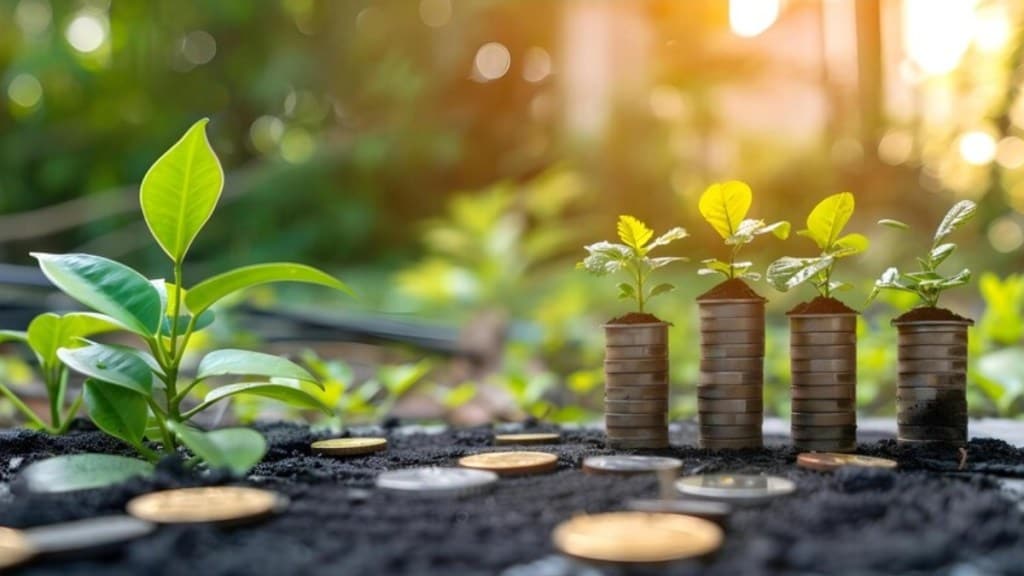By Syed Ali
Technologies are the linchpin for achieving carbon neutrality. With a glacially slow transition from fossil fuels to renewable sources, diversified decarbonization frameworks are crucial for progress. Carbon capture, utilisation, and Storage/sequestration (CCUS/s) is arguably the most trusted strategy for controlling global temperatures and meeting the Paris Agreement targets. CCUS involves capturing carbon from sources such as industrial emissions or directly from the atmosphere. The captured carbon is then utilized for various industrial purposes. Through sequestration, it is either stored biologically (e.g., in plants and soils) or geologically (e.g., injected into depleted oil reservoirs or deep saline aquifers).
Within the CCUS framework, Direct Air Capture (DAC) is an inchoate yet increasingly prominent technology. With the surging power consumption from AI-powered data centres, Microsoft has recently signed a carbon credit agreement with Occidental Petroleum worth several hundred million dollars to capture carbon from the atmosphere using DAC technology. Carbon credits are recommended for hard-to-abate sectors like steel and cement with scalable techniques; biological sinks, unlike technologies like DAC, are still being tested at scale. As AI adoption and data centre proliferation increase, it is crucial not to let market forces alone dictate and disrupt established procedures to meet growing consumer demand.
As highlighted by an IAEA study, while existing technologies will play a significant role, by 2050, half of the required carbon reductions will need to come from technologies currently in the prototype stage. Testing and advancing potential decarbonization technologies are essential to accelerating carbon mitigation strategies, DAC being one of them.
Unlike point source carbon capture techniques installed at the emission source, Direct Air Capture (DAC) technology removes CO2 from the ambient air, targeting legacy emissions. The current atmospheric CO2 concentration is 422.11 ppm (parts per million), substantially higher than the safe level of 350 ppm and a 50% increase from pre-Industrial Revolution levels. This makes current levels the highest in at least 3 million years.
Direct Air Capture (DAC) removes CO2 from the ambient air by using fans to draw air over chemical sorbents or filters that capture and bind the CO2 molecules. The CO2-laden sorbent is then heated or depressurized to release the CO2, which is collected and compressed for industrial use or storage. The sorbent is regenerated and reused to capture more CO2. The CO2 captured from the air can be utilized for various industrial purposes, potentially becoming a game-changer. As economies of scale take effect, the costs associated with DAC will decrease, making it a more viable and widespread solution.
There are currently 27 DAC plants worldwide, capturing more than 0.01 Mt CO2/year. These plants are still in the early stages of development and are expensive. As of May 2022, the cost of direct air capture (DAC) carbon capture ranged from $250–$600 per tonne of carbon dioxide (CO2) removed, which is more expensive than other carbon capture methods. However, the costs could decrease to $100–$200 per tonne over the next 5–10 years.
Factors that can affect DAC costs include Capture technology, Energy costs, Plant configuration, and financial assumptions. Some ways to reduce DAC costs include modular design, economies of scale, using liquid solvents, and exploiting the low cost of solar technology.
In the IPCC study “Global Warming of 1.5°C” (2018), the need for emission reduction along with negative emission technologies like DAC was stressed. DAC will be particularly useful for the agriculture and transportation sectors, where fragmented emission sources make direct capture challenging. Indian innovation at scale has the potential to lead in this sector, possibly creating a future trillion-dollar industry. Iceland has installed DAC due to its abundance of geothermal energy resources powering the carbon capture process. Similarly, large Indian solar farms could serve as potential sites for DAC installation, using clean electricity to power the carbon capture process. Further innovation in CO2-binding molecules and storage solutions could enable widespread adoption of this technology and balance emissions. Creative thinking with existing technologies, such as underground Small Modular Nuclear Reactors, could also power large DAC farms.
In India, coal-generated electricity reached 447.6 million tonnes in 2022-2023, a 12% increase from the previous year, and now constitutes over 40% of the energy mix. This trend highlights the need for technical interventions to enhance the role of renewables while using coal during the transition. In the meantime, exploring and implementing ultra-supercritical and supercritical plants is crucial. Challenges in reducing coal consumption amid rising energy demand are primarily because of coal’s affordability and abundance. In addition, infrastructure limitations hinder renewable adoption, which is in contrast to the efficient coal supply chain and its social and employment impacts on communities dependent on mining and running thermal power plants.
Scaling DAC requires a public-private partnership (PPP) model between government entities and private companies to develop and install DAC technologies. The government may provide initial funding, grants, subsidies, and regulatory support, earmarked for clean infrastructure to encourage investment in the DAC infrastructure. Additionally, private sector capital to scale operations and develop markets for captured CO2 in various industrial applications may solve the final piece of the puzzle in creating a circular economy. This collaborative approach could accelerate the deployment of DAC, enhancing its efficiency and cost-effectiveness for carbon trading and meeting emission targets. Nations must rise to the challenge of carbon emissions and adopt ambitious decarbonization policies to drive sustainable progress.
(The author is a climate tech enthusiast who writes on sustainability and trade affairs.)
(Disclaimer: Views expressed are personal and do not reflect the official position or policy of FinancialExpress.com Reproducing this content without permission is prohibited.)


